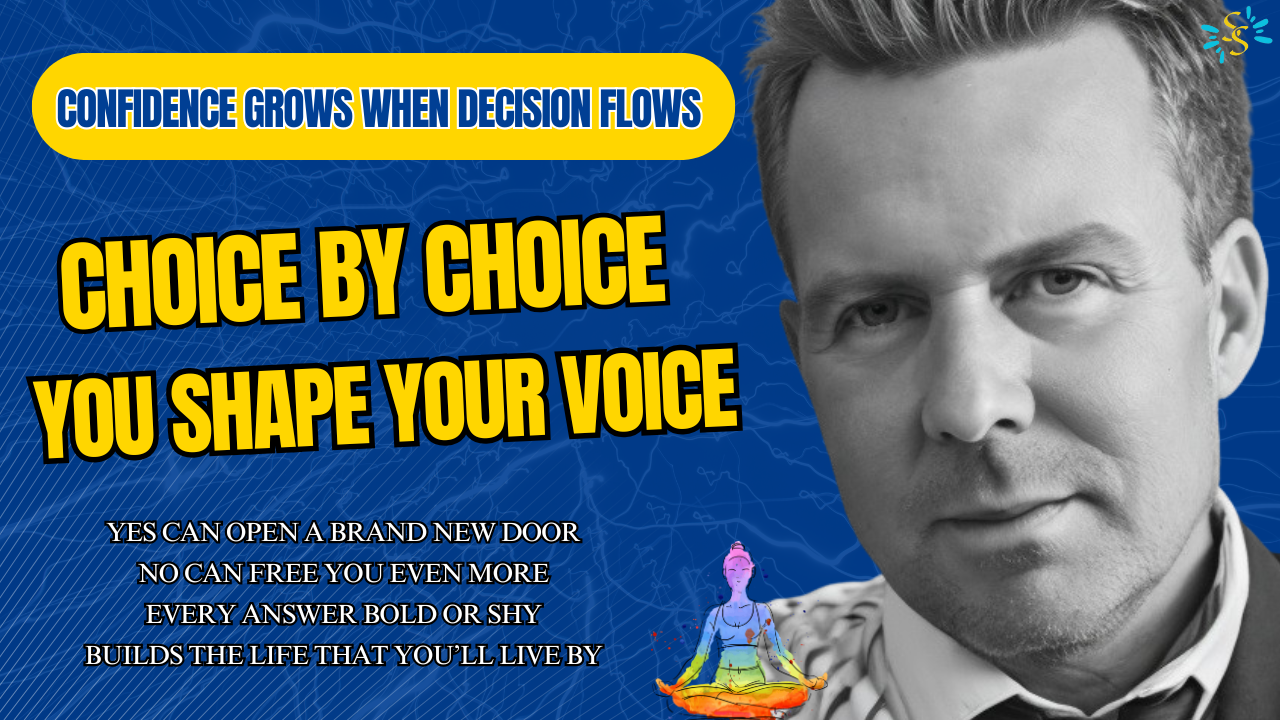Life is made up of countless decisions. Some come naturally and without much effort—like choosing what to wear or what to eat—while others require deeper thought and reflection. What we often forget is that every decision, big or small, involves a mix of emotional and logical thinking.
Today, we’ll explore the fascinating world of decision-making. It’s a process shaped by our feelings, thoughts, values, and even outside influences. As part of my series on the value of decision-making as we grow, I’ll outline some key aspects that affect how we choose, setting the stage for upcoming blogs where I’ll dive deeper into each one.
So, grab a warm drink, get comfortable, and let’s begin.
1. Introduction: Setting the Stage
Decisions are the foundation of our lives. Each one we make—whether small or life-changing—plays a role in shaping our experiences. Deciding to say “yes” to a new opportunity, reach out to an old friend, or even take a different route home can change the course of our lives.
But decisions aren’t always easy. They come with uncertainty, responsibility, and sometimes fear of the unknown. This series is about understanding decision-making, exploring what makes it challenging, and learning how to approach it with confidence and clarity.
2. Types of Decisions
Not all decisions are the same. Let’s break them down:
-
Everyday Decisions: These are routine choices—what to wear, what to eat, or how to spend your free time. They seem minor but can add up to influence your habits and overall lifestyle.
-
Life-Changing Decisions: These define our futures—choosing a career, moving to a new city, or starting or ending a relationship. These choices require thought and often involve weighing emotional and practical considerations.
-
Emotional vs. Logical Decisions: Sometimes, our heart and mind pull us in different directions. Balancing the two can lead to more thoughtful and fulfilling choices.
-
Reactive vs. Proactive Decisions: Reactive decisions happen in the moment, often driven by emotion, while proactive decisions involve planning and foresight. Both have their place, but being aware of the difference is powerful.
3. Influencing Factors
Every decision is shaped by a combination of internal and external factors:
-
Internal Influences: Our values, beliefs, and past experiences play a huge role in what we choose. For example, someone who values freedom might hesitate to commit to long-term obligations. Emotions like fear, excitement, or doubt also influence how we decide.
-
External Influences: Social pressure, cultural expectations, and advice from loved ones can impact our thinking. Sometimes, what others expect of us can cloud what we truly want.
Becoming aware of these influences can help us make choices that feel true to ourselves.
4. The Decision-Making Process
Making a decision often follows a simple process:
-
Recognizing the Need for a Decision: The first step is realizing that a choice must be made.
-
Gathering Information: Learn as much as you can about your options.
-
Evaluating Options: Consider possible outcomes and consequences.
-
Choosing and Acting: Make your choice and follow through with action.
No decision-making process is perfect. What matters is being thoughtful and intentional while remaining open to learning from the outcome.
5. Common Challenges
Why can decisions feel so difficult? Here are some common struggles:
-
Fear of Failure or Regret: The “What if I choose wrong?” question often lingers in our minds.
-
Indecisiveness: Overthinking can leave us stuck, afraid to move in any direction.
-
Peer Pressure: Social expectations can cloud our judgment.
-
Lack of Information: Sometimes, we’re forced to decide without knowing everything we wish we could.
Acknowledging these challenges can help us face them with greater confidence.
6. Tools for Better Decision-Making
Thankfully, there are practical tools that can make decision-making easier:
-
Pros and Cons List: Writing things down helps clarify your thoughts.
-
Visualization: Imagine how each choice would make you feel in the future.
-
Seeking Advice: Trusted mentors or friends can offer valuable perspectives.
-
Gut Check: Sometimes, your intuition already knows the answer.
These tools won’t guarantee perfect decisions, but they can guide you toward what feels right.
7. The Emotional Journey of Decision-Making
Every decision comes with an emotional journey:
-
Before the Decision: There’s often uncertainty, hope, or anxiety about what lies ahead.
-
During the Decision: This is the moment when clarity starts to form.
-
After the Decision: Relief, joy, or even regret can follow. But even when things don’t go as planned, each decision teaches us something valuable.
Allow yourself to experience these emotions without judgment. They’re part of the process.
8. Inspirational Stories
Consider J.K. Rowling, the author of Harry Potter, who faced rejection after rejection but chose to keep pursuing her passion. Her persistence led to life-changing success—not just for her but for millions of readers around the world.
Or take Steve Jobs, who once said, “Deciding what not to do is as important as deciding what to do.” His ability to focus on what truly mattered shaped the success of Apple and revolutionized the tech industry.
These stories remind us that our decisions, even in tough times, can lead to amazing outcomes.
9. Call to Action: Trust Yourself
So, where does this leave us?
Decisions aren’t about getting everything right—they’re about learning, growing, and trusting ourselves. The next time you face a tough choice, remember: you already have the wisdom you need within you. Use the tools we discussed, listen to your inner voice, and embrace the journey.
Thank you for joining me today. This is just the beginning of a deeper exploration into the art of decision-making. Please check out the upcoming blogs in this series, where I’ll dive into each of these areas in more detail to help you become more empowered in your decision-making journey.
Until next time, remember: every decision is a step toward becoming the person you’re meant to be.

